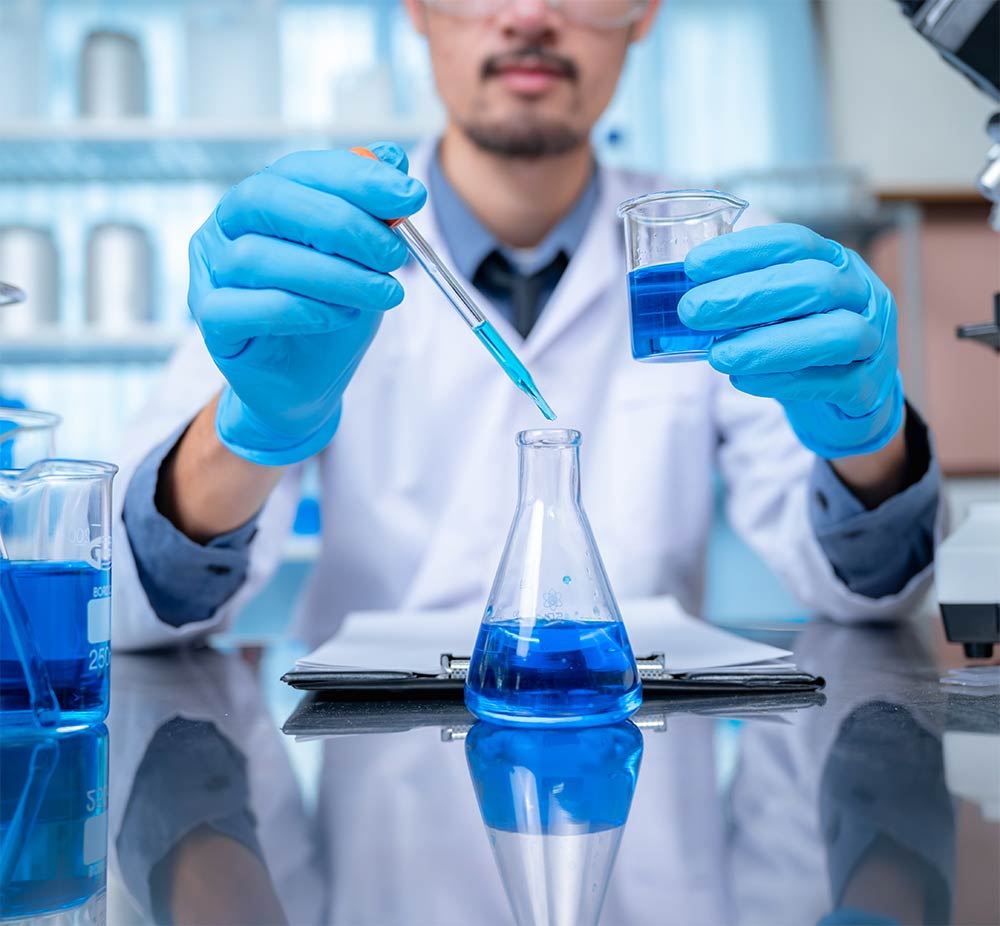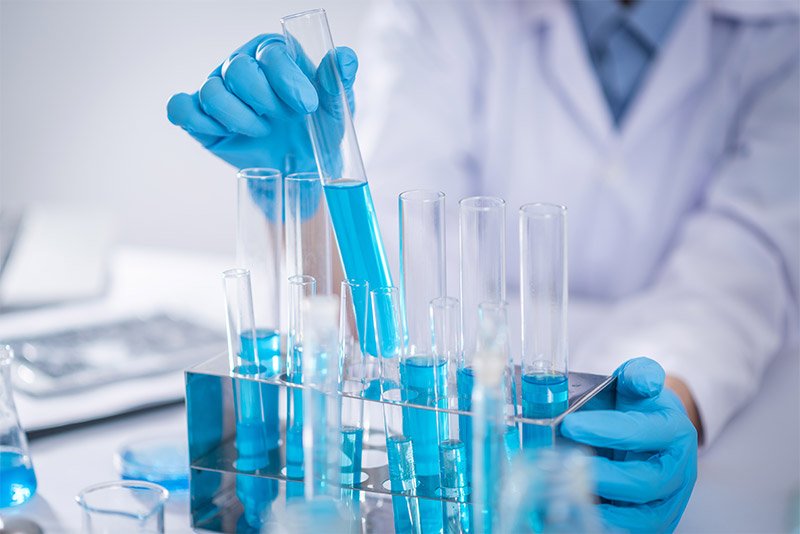5 Gigantic Influences Of Neopentyl Glycol Slurry.In today’s fast-paced world, industrial processes have seen remarkable advancements, particularly in the field of chemicals and materials. One such innovation that has made a significant impact is Neopentyl Glycol Slurry. This unique substance has taken the industrial sector by storm due to its versatile properties and wide-ranging applications. In this comprehensive article, we will delve into the five gigantic influences of Neopentyl Glycol Slurry, shedding light on its significance, uses, and potential in various industries.
Table of Contents
- Introduction
- Understanding Neopentyl Glycol Slurry
- The Chemistry Behind Neopentyl Glycol
- Properties of Neopentyl Glycol Slurry
- Applications in the Chemical Industry
- Role in the Automotive Sector
- Neopentyl Glycol Slurry in the Paints and Coatings Industry
- Importance in the Production of Plastics
- Environmental Impact and Sustainability
- Advantages and Disadvantages
- Storage and Handling
- Future Prospects
- Conclusion
- FAQs
Introduction
Neopentyl Glycol Slurry, often abbreviated as NPGS, is a substance that has revolutionized various industries. Its unique properties make it a highly sought-after material in the chemical, automotive, paints and coatings, and plastics industries. In this article, we will explore the five significant influences of Neopentyl Glycol Slurry and understand why it has become a crucial component in these sectors.
Understanding Neopentyl Glycol Slurry

Neopentyl Glycol Slurry, often abbreviated as NPGS, is a chemical compound that has gained significant recognition in various industries. This substance, which is typically in liquid form at room temperature, is colorless, odorless, and non-toxic. Its unique characteristics make it an invaluable material in applications ranging from the chemical industry to automotive manufacturing, paints and coatings, and plastics production.
The chemistry behind Neopentyl Glycol is fascinating. It contains three hydroxyl (OH) groups, which render it highly reactive. This reactivity is what makes NPGS an essential component in various chemical reactions, enabling it to serve as a fundamental building block in the synthesis of resins, coatings, and other products.
Neopentyl Glycol Slurry’s properties further contribute to its versatility. It exhibits excellent solubility, low volatility, and resistance to moisture, making it well-suited for a wide range of applications. Additionally, it has a low melting point and high purity, factors that enhance its desirability in the industries that rely on it.
In essence, Neopentyl Glycol Slurry is a substance that offers a remarkable combination of reactivity, solubility, and durability, making it a key influencer in multiple industrial sectors. Its importance is evident in the various ways it enhances the performance, quality, and sustainability of products across these industries.
The Chemistry Behind Neopentyl Glycol
Neopentyl Glycol, often referred to as NPG, is a chemical compound with a molecular formula of C5H12O2. This substance plays a crucial role in various chemical processes, and its chemistry is intriguing.
At its core, Neopentyl Glycol contains three hydroxyl (OH) groups. These hydroxyl groups are what make it highly reactive in chemical reactions. This reactivity is a fundamental reason why NPG is so valuable in the production of resins and other compounds.
When NPG is used in chemical reactions, it can participate in esterification and condensation reactions. These reactions involve the formation of chemical bonds between the hydroxyl groups of NPG and other compounds, such as acids. As a result, NPG is often used as a building block for the synthesis of various resins, including alkyd, polyester, and epoxy resins. These resins, in turn, have a wide range of applications in the manufacturing of adhesives, coatings, and composite materials.
The ability of Neopentyl Glycol to form these bonds and serve as a versatile precursor in chemical reactions is a testament to its significance in the chemical industry. Its unique chemistry allows it to contribute to the development of numerous products, making it a cornerstone in the world of chemistry and materials science.
Properties of Neopentyl Glycol Slurry
Neopentyl Glycol Slurry, often abbreviated as NPGS, possesses a range of distinctive properties that contribute to its importance in various industrial applications. These properties include:
- Solubility: NPGS is highly soluble in a variety of solvents and chemicals. This solubility makes it easily adaptable for use in different formulations and chemical processes, where it can be seamlessly integrated into various solutions.
- Low Volatility: One of the advantages of NPGS is its low volatility, meaning it does not readily evaporate at room temperature. This characteristic ensures that it remains stable during handling and processing, minimizing material loss.
- Moisture Resistance: NPGS exhibits resistance to moisture, making it suitable for applications where exposure to humidity or water is a concern. This property contributes to the durability of products in which it is used.
- Low Melting Point: Neopentyl Glycol Slurry has a relatively low melting point, which can be advantageous in applications that require low-temperature processing or mixing. It can be easily incorporated into various formulations and processes.
- High Purity: NPGS is known for its high level of purity. This purity ensures that it does not introduce impurities or contaminants into the products in which it is used, maintaining the quality and consistency of the final materials.
These properties collectively make NPGS a sought-after material in the chemical, automotive, paints and coatings, and plastics industries. Its versatility and adaptability, combined with these unique properties, allow it to enhance the performance, durability, and quality of various products and processes in these sectors.
Applications in the Chemical Industry
Neopentyl Glycol Slurry (NPGS) is a versatile chemical compound with a wide range of applications in the chemical industry. Its unique properties and reactivity make it an essential ingredient in various chemical processes. Here are some key applications of NPGS in the chemical industry:
- Resin Synthesis: NPGS is a crucial component in the production of resins, including alkyd, polyester, and epoxy resins. These resins are used in the formulation of adhesives, coatings, and composite materials. NPGS’s reactivity with various acids allows for the creation of resins with diverse properties, such as adhesion strength, flexibility, and durability.
- Adhesives: NPGS plays a significant role in the development of high-quality adhesives. Its presence enhances the adhesive’s bonding properties, making it suitable for applications where strong and reliable adhesion is required.
- Coatings: The chemical industry relies on NPGS for the formulation of coatings used in a variety of applications, from industrial coatings to protective coatings. These coatings benefit from NPGS’s ability to improve adhesion, flexibility, and resistance to environmental factors.
- Composite Materials: NPGS is used to create composite materials by reinforcing resins with fibers or fillers. These materials are vital in industries where lightweight, high-strength, and durable products are needed, such as aerospace and construction.
- Polyester Production: NPGS is an essential raw material in the manufacturing of polyester fibers and films. Its inclusion in the production process ensures the development of high-quality polyester products.
- Resin Modification: NPGS is employed to modify the properties of resins, allowing manufacturers to tailor their products to specific needs. This versatility makes it a valuable asset in the chemical industry.
The chemical industry benefits from Neopentyl Glycol Slurry’s ability to enhance the performance, durability, and versatility of various chemical products. Its contributions to resin synthesis, adhesive development, coatings, and composite materials play a pivotal role in shaping the capabilities of this dynamic sector.
Role in the Automotive Sector
Neopentyl Glycol Slurry (NPGS) plays a crucial role in the automotive industry, contributing to the production and performance of vehicles in various ways. Its unique properties and versatility make it a valuable component in this sector. Here’s how NPGS influences the automotive industry:
- Automotive Coatings: NPGS is widely used in the manufacturing of automotive coatings. These coatings serve as protective layers on the surface of vehicles, enhancing their aesthetics and durability. The inclusion of NPGS in these coatings contributes to the longevity of the paint job, ensuring that vehicles maintain their appearance and protection from environmental factors.
- Corrosion Resistance: Automotive coatings formulated with NPGS offer excellent corrosion resistance. This is a critical feature, as vehicles are constantly exposed to harsh environmental conditions, including moisture, UV radiation, and road salts. NPGS helps extend the life of automotive coatings by providing robust resistance to corrosion and chemical degradation.
- Adhesion and Flexibility: Neopentyl Glycol Slurry enhances the adhesion and flexibility of automotive coatings. This means that the coatings adhere securely to the vehicle’s surface and can withstand the stresses and strains that a moving vehicle experiences. This is particularly important for maintaining the appearance and durability of the coatings.
- High Gloss and Finish: NPGS contributes to achieving a high-gloss finish in automotive paints. The smooth and shiny appearance of the paint enhances the visual appeal of the vehicle, making it an attractive feature for consumers.
- Environmental Performance: In the automotive industry, there is a growing emphasis on environmental performance and sustainability. Coatings containing NPGS can be designed to meet environmental regulations and reduce the environmental impact of vehicle manufacturing and maintenance.
- Customization: NPGS allows for the customization of coatings to meet specific automotive industry requirements. Different types of coatings can be formulated to provide specific levels of protection, appearance, and performance, catering to various vehicle models and applications.
In summary, Neopentyl Glycol Slurry’s role in the automotive sector is pivotal. It contributes to the longevity and aesthetic appeal of automotive coatings while enhancing their environmental performance and resistance to corrosion. As the automotive industry continues to evolve, NPGS remains a key component in the production of high-quality vehicles with durable and attractive finishes.
Neopentyl Glycol Slurry in the Paints and Coatings Industry
Neopentyl Glycol Slurry (NPGS) is a vital ingredient in the paints and coatings industry, where it plays a substantial role in the development of high-quality coatings for various applications. Its unique properties and versatility make it a preferred choice for manufacturers in this sector. Here’s how NPGS influences the paints and coatings industry:
- Enhanced Adhesion: NPGS is used to improve the adhesion of coatings to surfaces. Whether it’s coating metals, plastics, or other materials, the presence of NPGS enhances the bonding properties, ensuring that coatings adhere firmly and securely to the substrate.
- Flexibility: The flexibility of coatings is essential in applications where the coated surface may undergo slight movements or expansion and contraction. NPGS contributes to the flexibility of coatings, allowing them to withstand these dynamic conditions without cracking or peeling.
- Weather Resistance: Coatings formulated with NPGS are known for their exceptional weather resistance. They can withstand exposure to UV radiation, temperature fluctuations, moisture, and other environmental factors. This makes them ideal for outdoor applications, such as architectural coatings and automotive paints.
- Durability: NPGS enhances the durability of coatings, ensuring they have a longer service life. Coated surfaces remain protected and maintain their appearance over an extended period, reducing the need for frequent maintenance and repainting.
- Custom Formulations: NPGS provides flexibility to coating manufacturers, allowing them to create custom formulations that meet specific requirements. This adaptability is invaluable when tailoring coatings for diverse applications, from industrial to architectural.
- High-Quality Finish: NPGS contributes to achieving a high-quality finish in coatings. The smooth, glossy appearance of the coated surface enhances the aesthetic appeal of products, making them more attractive to consumers.
- Eco-Friendly Solutions: As environmental concerns grow, NPGS is often a part of coatings designed to meet eco-friendly standards. These coatings minimize the release of harmful chemicals into the environment, aligning with sustainability goals.
Importance in the Production of Plastics
Neopentyl Glycol Slurry (NPGS) plays a significant role in the production of plastics, particularly in the creation of composite materials with enhanced properties. Its unique characteristics make it an essential component in the plastics industry. Here’s why NPGS is important in plastic manufacturing:
- Unsaturated Polyester Resins: NPGS is used to synthesize unsaturated polyester resins. These resins are crucial in the production of reinforced plastics, such as fiberglass-reinforced plastics (FRP). The resulting composite materials exhibit remarkable strength, durability, and resistance to environmental factors.
- Lightweight and High-Strength: Composite materials made with NPGS are known for their exceptional strength-to-weight ratio. This makes them ideal for applications where lightweight materials with high structural integrity are required, such as in the aerospace, automotive, and construction industries.
- Corrosion Resistance: NPGS-reinforced plastics are highly corrosion-resistant. This feature is particularly important in industries where exposure to harsh chemicals or environmental conditions can cause degradation in traditional materials.
- Design Flexibility: Plastics created with NPGS can be molded into various shapes and sizes, offering design flexibility. This adaptability allows manufacturers to produce a wide range of products with specific geometries and performance characteristics.
- Energy Efficiency: The lightweight nature of NPGS-reinforced plastics contributes to improved energy efficiency in applications. For example, in the automotive sector, lighter vehicles consume less fuel, reducing carbon emissions.
- Durability: NPGS enhances the durability of plastics, ensuring that they can withstand mechanical stress, impact, and wear over extended periods. This durability is essential in applications where long-term performance is required.
- Electrical Insulation: Some NPGS-reinforced plastics provide excellent electrical insulation properties. This is valuable in electrical and electronic applications where insulating materials are essential for safety and performance.
In conclusion, Neopentyl Glycol Slurry is a key contributor to the production of advanced plastics, especially in the creation of composite materials. These plastics offer a unique combination of lightweight, high-strength, and corrosion-resistant properties, making them valuable in various industries, including aerospace, automotive, and construction. NPGS-enhanced plastics have the potential to revolutionize how we build and design products, offering innovative solutions that meet the demands of modern industries.
Environmental Impact and Sustainability

Neopentyl Glycol Slurry has gained attention in recent years for its positive environmental impact and sustainability. Here’s how NPGS contributes to a more eco-friendly and sustainable future:
- Low Environmental Impact: NPGS is known for having a low environmental impact. Its production process generates minimal emissions and waste, making it a more sustainable choice compared to some alternative chemicals. This aligns with the growing emphasis on reducing the environmental footprint of industrial processes.
- Recyclability: NPGS is recyclable, which is a crucial factor in the drive toward sustainability. The ability to recycle NPGS reduces the consumption of new raw materials and lessens waste in landfills, contributing to a circular economy.
- Reduced VOC Emissions: In applications like coatings and adhesives, NPGS helps in the formulation of low-VOC (Volatile Organic Compounds) products. Low-VOC formulations reduce air pollution and improve air quality, addressing environmental and health concerns.
- Energy Efficiency: NPGS-enhanced materials, especially lightweight plastics, contribute to energy efficiency. For example, in the automotive industry, the use of lightweight NPGS-reinforced plastics in vehicle components reduces fuel consumption and greenhouse gas emissions.
- Sustainable Product Performance: NPGS improves the durability and performance of materials in various applications. This sustainability aspect is crucial because longer-lasting products reduce the need for frequent replacements, conserving resources and reducing waste.
- Adoption of Eco-Friendly Coatings: The use of NPGS in coatings promotes the development of eco-friendly coatings. These coatings often adhere to stringent environmental regulations, such as those limiting the use of hazardous chemicals.
- Sustainable Materials: NPGS is a key ingredient in the creation of sustainable composite materials. These materials are used in applications where lightweight and durable solutions are essential, helping to achieve both environmental and performance goals.
- Alignment with Sustainable Goals: NPGS aligns with global sustainability goals, such as reducing the carbon footprint, conserving resources, and minimizing waste. Its adoption in various industries helps these sectors meet their sustainability targets.
Advantages and Disadvantages
- Versatility: NPGS is a versatile compound used in various industries, including chemicals, automotive, paints and coatings, and plastics, due to its ability to enhance the properties of materials.
- Enhanced Durability: It contributes to the durability of products in applications like automotive coatings and composite materials, prolonging the lifespan of these materials.
- Excellent Adhesion: NPGS improves the adhesion of coatings, adhesives, and resins to surfaces, ensuring secure and long-lasting bonding.
- Flexibility: Its flexibility is valuable in coatings and composite materials, allowing them to withstand movements and changes in environmental conditions.
- Low Volatility: NPGS is characterized by low volatility, ensuring stability during handling and processing.
- Corrosion Resistance: It provides excellent resistance to corrosion, making it suitable for applications exposed to harsh environmental conditions.
- Lightweight Strength: NPGS-reinforced materials offer a high strength-to-weight ratio, making them ideal for lightweight yet durable solutions in various industries.
- Sustainability: NPGS’s low environmental impact and recyclability align with sustainability goals, making it a more eco-friendly choice.
Disadvantages of Neopentyl Glycol Slurry:
- Cost: NPGS can be relatively expensive, which may impact its widespread adoption, especially in cost-sensitive industries.
- Complex Handling: Proper storage and handling practices are necessary to ensure the effectiveness and safety of NPGS, which can require careful attention to detail.
- Regulatory Compliance: NPGS-containing products may need to comply with environmental and safety regulations, which can add complexity to their use.
- Limited Solubility: While NPGS is highly soluble in many solvents, it may have limitations in some specific applications.
- Adoption Challenges: The adoption of NPGS may face resistance in industries that are traditionally resistant to change or have well-established processes.
- Environmental Concerns: Although NPGS is generally considered environmentally friendly, concerns may arise regarding its production processes and environmental impact, particularly in stringent regulatory environments.
Storage and Handling
Proper storage and handling of NPGS are essential to ensure its effectiveness and safety. Here are key considerations for the storage and handling of NPGS:
- Storage Conditions:
- NPGS should be stored in a cool, dry, and well-ventilated area.
- Store containers of NPGS in a way that prevents direct exposure to sunlight, heat, or open flames.
- Maintain a stable storage temperature within the specified range, typically between 15°C and 30°C (59°F to 86°F).
- Container Selection:
- Use containers made of materials compatible with NPGS, such as stainless steel, aluminum, or high-density polyethylene (HDPE).
- Ensure containers are tightly sealed to prevent contamination and moisture ingress.
- Labeling and Identification:
- Clearly label containers with the contents, including the product name and any relevant hazard warnings.
- Maintain proper identification to prevent confusion with other substances.
- Ventilation:
- Ensure adequate ventilation in storage areas to disperse any vapors or fumes that may be emitted, although NPGS is known for its low volatility.
- Handling Precautions:
- When handling NPGS, wear appropriate personal protective equipment, including gloves, safety glasses, and suitable protective clothing to prevent skin and eye contact.
- Avoid breathing in vapors or mists by using respiratory protection if necessary.
- Spill and Leak Response:
- In the event of a spill or leak, contain the substance using absorbent materials and follow established procedures for cleaning and disposal.
- Report spills or leaks to the appropriate authorities and follow any environmental regulations for containment and cleanup.
- Fire Safety:
- NPGS is not flammable, but standard fire safety precautions should be followed in the storage area, including keeping fire extinguishing equipment accessible.
- Incompatibilities:
- Avoid contact or storage of NPGS with incompatible substances, such as strong acids or bases, to prevent undesirable reactions.
- Regulatory Compliance:
- Ensure compliance with local, state, and federal regulations regarding the storage, handling, and disposal of NPGS, as it may be subject to specific requirements.
- Training:
- Employees responsible for handling and storing NPGS should be adequately trained in the safe handling and emergency response procedures.
Future Prospects
The future prospects of Neopentyl Glycol Slurry appear promising, with several trends and developments shaping its continued relevance in various industries. Here are some key factors to consider:
- Sustainability Emphasis: As environmental concerns continue to grow, the sustainable properties of NPGS make it an attractive choice. Industries are likely to increase their reliance on NPGS to meet eco-friendly and regulatory requirements.
- Innovative Formulations: Researchers and manufacturers are exploring innovative formulations and applications for NPGS. These may include novel resin and composite materials designed to meet specific industry needs.
- Customization: NPGS allows for the customization of materials and products to meet diverse requirements. The ability to tailor formulations to specific needs will be a significant driver of future applications.
- Advanced Coatings: NPGS is poised to contribute to the development of advanced coatings with superior adhesion, durability, and weather resistance. These coatings will find use in diverse industries, including automotive, construction, and electronics.
- Lightweight Materials: Industries such as automotive and aerospace are increasingly focused on lightweight yet strong materials to enhance fuel efficiency and reduce emissions. NPGS-reinforced plastics will play a pivotal role in achieving these goals.
- Eco-Friendly Manufacturing: The adoption of NPGS can contribute to eco-friendly manufacturing practices, aligning with global sustainability goals and addressing environmental concerns.
- Research and Development: Ongoing research and development efforts will likely uncover new applications and formulations for NPGS, expanding its influence in various sectors.
- Market Growth: The demand for NPGS is expected to increase as industries recognize its unique properties and advantages. This growth will drive further innovation and market expansion.
- Regulatory Compliance: As regulations related to environmental impact become stricter, NPGS’s eco-friendly characteristics will become increasingly appealing, driving its adoption in industries that seek to comply with these regulations.
Conclusion
In conclusion, the influences of Neopentyl Glycol Slurry are indeed gigantic. From enhancing the performance of chemical products to contributing to the longevity of automotive coatings and the durability of plastics, NPGS has a far-reaching impact. Its environmental friendliness and versatility only add to its significance in modern industries.
FAQs
What is Neopentyl Glycol Slurry?
Neopentyl Glycol Slurry is a chemical compound used in various industries, including chemicals, automotive, paints and coatings, and plastics, for its unique properties and versatility.
How is NPGS used in the chemical industry?
NPGS is used in the chemical industry for the synthesis of resins, including alkyd, polyester, and epoxy resins, which are essential in the production of adhesives, coatings, and composite materials.
What are the advantages of using NPGS in the automotive sector?
NPGS enhances the durability and performance of automotive coatings, contributing to the longevity of the paint job and protecting the vehicle’s surface.
How does NPGS influence the paints and coatings industry?
NPGS improves the adhesion, flexibility, and weather resistance of paints and coatings, making it a preferred choice for manufacturers in the construction and maintenance industries.
Is Neopentyl Glycol Slurry environmentally friendly?
Yes, NPGS has a low environmental impact and is recyclable, making it a sustainable option for eco-friendly industries.



